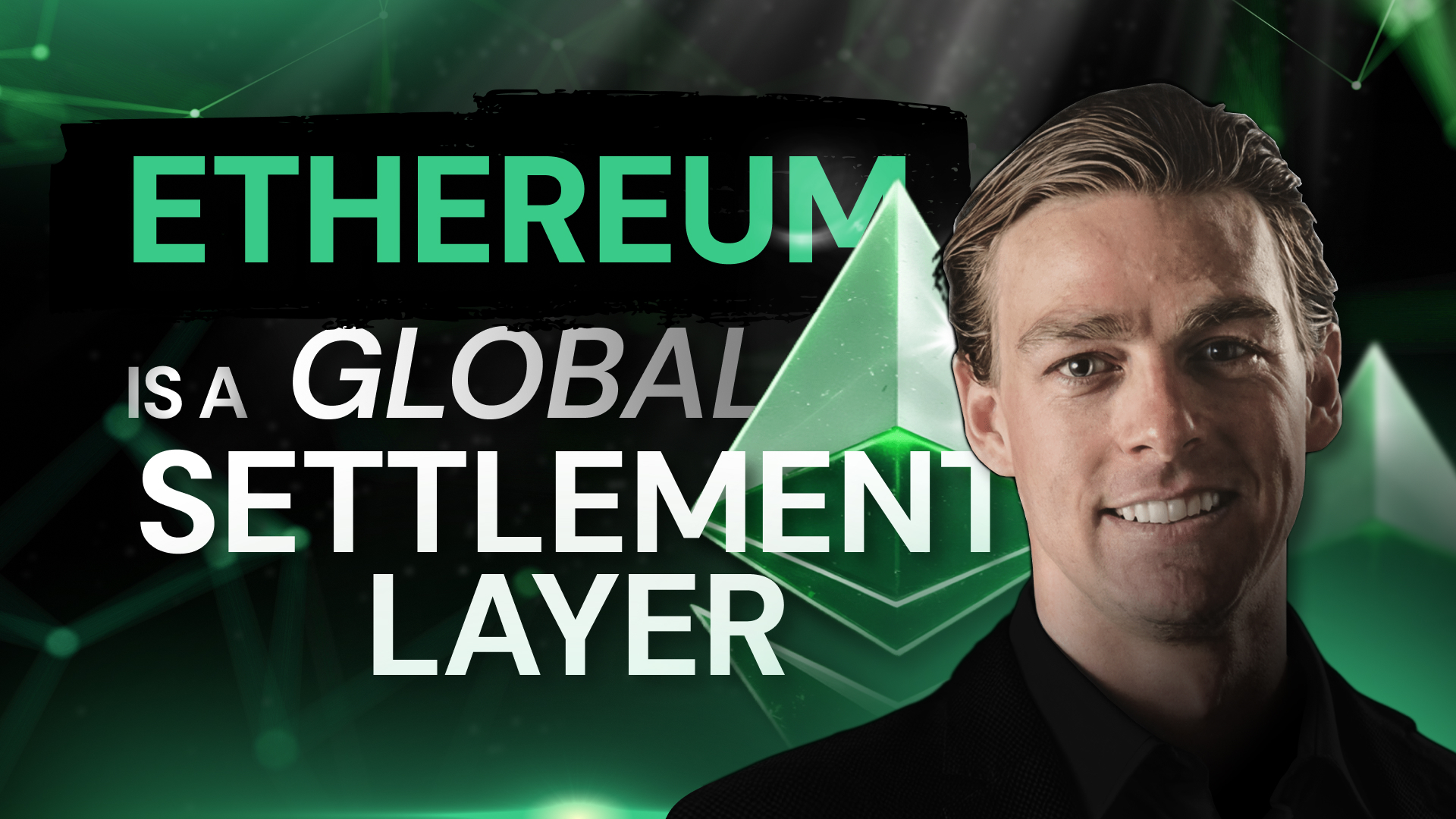Watch the full panel discussion on Gamma Prime’s YouTube channel
Panel discussion with John Divine, Digital Asset OTC Trading at Blockfills
As Ethereum becomes a balance sheet asset for companies, funds, and DAOs, managing ETH–USD risk will be critical. Options and structured products offer powerful tools for hedging, generating yield, and unlocking liquidity – whether through bilateral trading, exchanges, or decentralized protocols. With strategies like covered calls, cash-secured puts, and basis trades, the Ethereum options market is rapidly evolving into a vital part of both DeFi and traditional finance.
John Divine from Blockfills dives deeper into this matter.
John
I’m gonna talk to you today about Ethereum options markets. We’re gonna talk about these in two segments.
We’re gonna think about them through bilateral trading, as in over-the-counter trading, or also via an exchange. And we’re also gonna talk about it as in concepts for decentralized finance and how options markets and structured products are gonna start trading, or even more significantly, gonna start trading in decentralized venues.
So, why are we talking about Ethereum options?
Number one, before I get to the bullet points, Ethereum is going to be, and already is, becoming a balance sheet asset for a number of entities, corporations, obviously hedge funds, and of course, our Ethereum whales that are already invested in the asset.
So if, like Bitcoin, Ethereum is gonna become a balance sheet asset, treasury managers need to be able to manage the risk between ETH and dollars, or the ETH dollar spread. Also, as we’re all aware of in this room, Ethereum is a global settlement layer. So they’re perfect for clearing options transactions.
Options are risk transfer mechanisms, and we’re gonna put them to work to defend our Ethereum position. I’ll show you how we do that.
As I already said, decentralized options exchanges are gaining momentum, and the next iteration of that will be not just vanilla options, but structured products and exotic options. And this is where it gets very exciting for traditional finance that’s gonna start using Ethereum rails.
I wrote a book on Bitcoin options. Obviously, we’re at ETH Denver, the same strategies apply. This book is available on Amazon for anyone who wants to learn more about how to manage risk or generate real yield.
And I have two copies with me right now, so if anyone’s extra interested after the presentation, come find me and I’ll give you a copy of the book.
So here’s what we’re gonna talk about. We’re gonna talk about statistical arbitrage. We’re gonna talk about covered calls, zero-cost collars, cash-secured puts, and risk reversals.
This is the market I’m gonna show you guys. It’s gonna be the March 28th Ethereum options market. I took this screenshot on Friday when I put together the slides.
Ethereum was trading at 2,655. The futures price, the forward contract for March, was trading at 2,676. The days to expiration for these futures and options is 34 days when I took the screenshot on Friday. And volatility’s at 63%.
Notice the spot price of Ethereum and notice the forward price. You see how the spot price trades under forward? There’s a 9.4% annualized rate of return for anyone who’s interested in that spread.
And that’s where I’m gonna start the presentation. This is statistical arbitrage.
The blue line, as you can see on the screen, is spot. And the green line is the forward price.
I can go ahead and buy spot Ethereum and sell forward, sell the March 28th futures contract, and annualize 9.4%.
Now, this is with Ethereum or Ether going through a little bit of a rough patch, as we all realize. This spread is usually much bigger than 9.4%. When Ethereum gets into a bull market, this spread can blow out to 20, 25%.
So, astute traders and portfolio managers and treasury managers can buy spot Ethereum, sell forward, and lock in that spread as a P&L gain for their portfolio or for their treasury. We call that the basis trade.
There’s some other things you can do. And this bottom right square, I say, you can either collect that spread as yield, 9.4%, put it in your pocket, or you can buy spot Ether, sell forward, take that spread, and buy call options.
Now, if Ether rallies, you’re gonna have a gain that’s significantly greater than 9.4% from the call option. You can also do call spreads or buy binary call options. Again, if you’re into this stuff, come talk to me. I’ll leave it at that.
So that’s the basis trade. That’s buying spot Ether, selling forward.
Now I’m gonna talk to you about options.
There’s two types of vanilla options. There’s call options and put options.
A call option grants the holder the right to own the asset, Ethereum, at the strike price on the expiration date. The expiration date I’m gonna talk about is March 28th, which is the last Friday of this coming month.
Put options are the opposite. Put options allow the holder of the contract the right to sell Ethereum at the strike price on the expiration date.
Ethereum options contracts are one ETH. One contract represents one Ethereum, one ETH.
The expiration dates are weekly, monthly, or quarterly. They expire on the Fridays at 8 a.m. UTC. The strike price is the price which a transaction will occur if the option is in the money.
It’s either a call or a put, and the settlement is either Ethereum or U.S. dollar / stablecoin.
So let’s talk about this market again. ETH, U.S. dollar market, March 28th, 2025. That’s the data points. Let’s get into it.
The first strategy I’ll tell you is a covered call. You own Ethereum. You can sell call options against your Ethereum to generate cash flow, to generate a rate of return.
You can take that rate of return in dollars or in ether. Because you own the asset, you can sell the right for someone else to buy your asset at a higher strike price.
What I mean by that is March 28th expiration, we’re gonna use a 3,200 strike price while spot was trading at 2,655. Okay, so that means the strike price is 21% above spot.
We’re gonna sell that option, and that option is gonna pay us 22% annualized rate of return.
If you look all the way on the left of the chart, you’ll see the strike prices. I’ve highlighted 3,200, that’s the strike price I wanna sell.
That option on Friday when I made the slides was bid for $48. So I own one Ethereum. I can sell one 3,200 strike call option, which obligates me to sell my Ethereum at 3,200.
And in exchange for that obligation, I get paid a yield. And that yield is 22% annualized or $48.
Next one I’m gonna show you: Ethereum, again, like we just said, you own Ether, you can sell upside call options, collect a premium yield.
But now what I’m gonna show you here is doing that trade, except taking the premium and going to buy protection or the right to sell your Ether at a predefined strike price.
This guarantees you a sale price. It gives you a floor for your Ethereum.
The example I’m gonna show you is selling the same call, that 3,200 call option for March 28th. We’re gonna take the premium and buy the 2,200 strike put for free.
So now I have upside to 3,200, but I know for sure I can sell my Ethereum at 2,200. We’re doing this at zero cost.
So look on the left is the call market. I’m selling that 3,200 strike call option. I’m getting paid $48, and I’m gonna go buy the 2,200 strike put for free. Give myself a floor price.
Now, when Ethereum trades lower, that put option or that insurance or that right to sell at 2,200, it goes up tremendously. And the value of the call option that you sold depreciates.
So in the current environment we’re in for Ethereum, this is the trade to have on.
Now, this is what I’m gonna show. It’s called a cash-secured put.
Let’s say you have dollars or stablecoin and you wanna buy Ethereum. You can go buy spot Ether. We all know how to do that.
But what if I told you, you could sell a put option and obligate yourself to buy Ethereum, which is what you wanna do anyway, except you’ll get paid a premium yield because you sold a put option. You provided insurance to the marketplace.
So instead of just buying Ether with your cash, we’re gonna sell a put option.
I’m using the same strikes for simplicity. We’re gonna sell the March 28th, 2025, 2,200 strike Ethereum put option. We are now obligated to buy Ethereum at 2,200 on March 28th.
And for that obligation, the market’s gonna pay you $47 per Ethereum.
And that yield is 21% annualized. So instead of just buying spot, sell cash secured put options to establish a long Ether position.
Now I’ll build on this strategy a little bit. We’re gonna sell that same put option, except now we’re gonna take the premium we earned, that $47. Instead of just putting that in our pocket, we’re gonna take that $47 and go buy call options. So now we’re gonna be obligated to buy Ethereum at 2,200, but we’re also gonna buy the right to own Ethereum on the upside.
And so the example I’ll show you is: sell the 2,200 strike put option as we’ve covered. We’re gonna buy the 3,400 strike call option with the premium earned. And we’re also gonna have some leftover. It’s gonna annualize me 7.5% with the remainder of my cash from this strategy.
So the way it looks on the market is, again, on the left, put options, I’m selling the 2,200 strike put. I now have an obligation to own Ethereum at 2,200. I’m taking that premium and I’m buying call options.
Now, think about the market. If Ethereum starts to trade higher, the insurance you sold to the market is gonna go lower. And you sold that insurance, you want it to trade lower. The call option you purchased will go higher. Call options increase in value as the underlying asset increases in value. So I’m giving myself a free call option here, basically. I’m saying, sure, I’ll buy your Ether at 2,200 bucks. In exchange for that, I’m gonna buy some upside optionality at zero cost. And if Ether turns around right here, this position is the winner.
This is a next one I’ll cover is a covered strangle. And this is for someone who’s got Ether and dollars, and you just wanna create a cash flow. And you wanna create cash flow either in Ether or in dollars. I’ll show you the strat. It’s gonna return 43%. Again, I’m taking the data from Friday.
And so what we’re doing, again, we’re selling options. I’m selling the 2,200 strike put option. I’m collecting premium. But in this scenario, I’m also gonna sell the call option. I’m gonna sell both sides of it. I’m selling the 3,200 strike call. So as long as Ether stays between 2,200 and 3,200, I collect 48% annualized rate of return.
And by the way, if we go outside of the bands, either to the downside or to the upside, I’m doing this in a covered position, meaning I own the Ether that I’m selling the call options against. And I have dollars to buy Ether at the put strike. So this is a great strategy for someone who has dollars in Ether and wants to generate cash flow via obligations to the market.
Those are my strats for you guys. I’m low on time, but I’m gonna show you another important thing to keep an eye on if you’re trading Ethereum actively. You need to understand the open interest by strike for the expirations against the underlying asset. March is the quarterly expiry. So it’s very important to be aware of where’s all the action.
Right now, all the action in March options is at the 2,800 strike call option. You can kind of see where the liquidity is. Very important to understand open interest by strike.
And then this is my favorite indicator for market sentiment. Forget the social sentiment. Where are people putting their money to work? That’s the real market sentiment.
What I’m showing you here is something called skew. And if you look on the table, you see these are all the expiration dates, February, March, April, June, September, December, where Ether is in the middle, Bitcoin, Ether, and then the Ether-Bitcoin spread. Where you see green means put options or insurance is more expensive than upside optionality.
And then where you see red means that upside optionality is more expensive than insurance. What this means is, like for example, with this Pectra upgrade coming for Ethereum, insurance is more expensive than upside optionality. Market participants are willing to pay for downside protection right now because of this Pectra upgrade. So we’re seeing that on the March 28th expiry, all of February, we’re seeing that. And then the market comes back bullish in June. And I mean, April’s flat.
But skew is my favorite sentiment indicator by far. And that’s what I got for you. I have like a minute or two for any questions if there’s a couple out there.
Anybody got a question? Nobody wants to ask a question. You got me for one more minute. Anything on options?
Where do you buy the options?
So I’m representing Blockfills. Blockfills is an institutional market maker. We work with hedge funds, high net worth individuals, any entity that has Ethereum on the balance sheets. You can obviously use Google as well to find this stuff.
Yeah, we are principal market makers. When you trade an option against us, you face Blockfills. We would – yeah, in this scenario, I mean, obviously we’re at ETH Denver. This stuff is going to DeFi. Like that’s where I’m positioning myself, is to provide liquidity on these instruments in decentralized finance protocols.
But yes, most of the liquidity right now is still bilateral trading over the counter or via exchange. Yeah, the open interest chart I showed you, I aggregated open interest across a bunch of public venues. That’s where that number’s coming from. And same thing with skew.
Yes, we can talk about that one after. Anybody got a strategy question before they’re gonna kick me off the stage? All right, well, thank you all very much.



